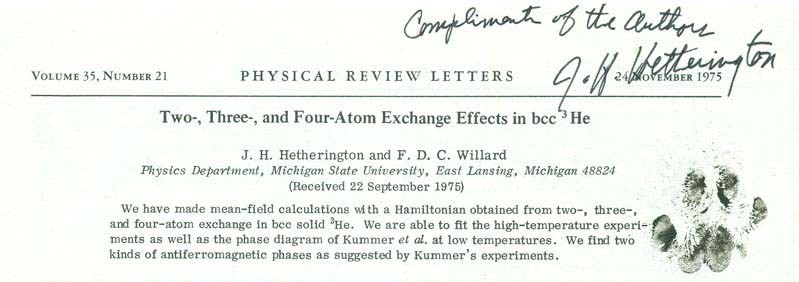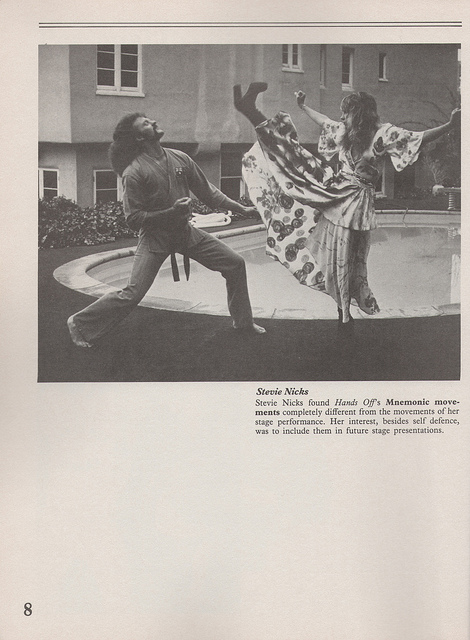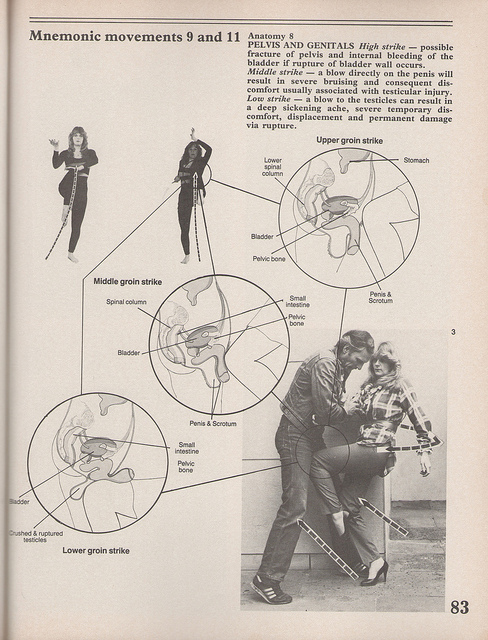Yesterday, on Twitter, Priscilla Page reminded us of the time when “Stevie Nicks showed us how to kick ass in high-heeled boots in her bodyguard’s self-defense book,” calling our attention to the little-known 1983 book, Hands Off!: A Unique New System of Self Defence Against Assault for the Women of Today.
The book itself was written by Bob Jones, an Australian martial arts instructor who doubled as a security guard for Fleetwood Mac, The Beatles, The Rolling Stones, David Bowie, Joe Cocker and other stars. And it featured what Jones called “mnemonic movements”–essentially a series of nine subconscious/reflexive self-defense moves (like a swift knee to the groin). See Jones’ website for a more complete explanation of the exercise routine that also provided, he notes, a great cardio workout.
Stevie Nicks agreed to take part in a photoshoot where she would help demonstrate the nine mnemonic movements. Jones recalls,” This lady was a professional: in two hours I had a hundred of the most magnificent photos ever offered to the martial arts, and just one would make the cover [above].”
“On this day of the shoot I was standing in my martial arts training uniform, wearing my Black Belt. Then Stevie appeared, her hair done to resemble the mane of a lion. She was psyched up for some serious photographing. Stevie wore her familiar thick-soled, thick-heeled, knee-high brown suede kid leather boots. High roll-over socks appeared over the top of these elegant Swedish boots and hung tentatively around her knees.” “In these kicking-style photographs the sun also made her dress partially see-through: just enough to be artistically interesting.”
Hands Off is now long out of print. But you can find a series of images from the book on the Voices of East Anglia and Dangerous Minds websites.
via Priscilla Page/Coudal
If you would like to sign up for Open Culture’s free email newsletter, please find it here. It’s a great way to see our new posts, all bundled in one email, each day.
If you would like to support the mission of Open Culture, consider making a donation to our site. It’s hard to rely 100% on ads, and your contributions will help us continue providing the best free cultural and educational materials to learners everywhere. You can contribute through PayPal, Patreon, and Venmo (@openculture). Thanks!
Related Content:
Radical French Philosophy Meets Kung-Fu Cinema in Can Dialectics Break Bricks? (1973)
Kung Fu & Martial Arts Movies Online









